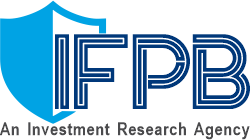
What is a Reg A+ Investment Offering?
Reg A+ of Title IV of the JOBS Act s a type of offering which allows private companies to raise up to $50 Million from the public in a 12 month period.
Like an IPO, Reg A+ allows companies to offer shares to the general public and not just accredited investors making it possible for almost anyone to invest in a business through crowdfunding.
Companies looking to raise capital via Reg A+ will first need to file with the SEC and get approval before launching a mini-IPO. However, the fees associated with a Reg A+ offering are much lower than a traditional IPO, and the ongoing disclosure requirements are much less burdensome, effectively making a Reg A+ offering a mini-IPO.
The key difference between Reg A and Reg D is that companies raising under Reg D can only accept investments from Accredited Investors while those conducting a Reg A offering are able to accept funds from both accredited and non-accredited investors.
The new rules modernize the existing Regulation A framework by, among other things, requiring disclosure documents be filed on EDGAR, enabling the review of offering documents and allowing “testing the waters” communications.
The securities that may be offered under Reg A+ Investments are limited to equity securities, including warrants, debt securities, and debt securities that are convertible into or exchangeable into equity interests, including guarantees of such securities.
A company engaged in a Reg A+ have ample flexibility concerning offering communications. At any time before the qualification of the offering statement, including the filing of the offering statement with the SEC, a company or any person authorized to act on behalf of a company may communicate orally or in writing with potential investors to determine whether there is any interest in the contemplated securities offering. This is referred to as “Testing the Waters.” Testing the Waters involves oral or written communications to determine whether prospective investors could be interested in the offering. By soliciting potential investors, businesses can gauge the market interest in their securities before formally launching the offering. Testing the Waters may not involve solicitation or acceptance of payment or a commitment to future payment for securities. The anti-fraud provisions of the federal securities laws apply to these communications as well as certain legal requirements.
Regulation A+ is broken up into Tiers I and II. Here’s a quick overview of the key differences between the two:
- Tier I, eligible U.S. and Canada-based companies are able to offer and sell up to $20 million in equity. The previous limitation was $5 million. The company must pass a state coordinated review and their financials are subject to ongoing compliance. There are no limitations to the size of an investment in the company.
- Tier II, eligible U.S. and Canada-based companies are able to offer and sell up to $50 million in equity. Non-accredited investors have caps on how much they can invest. They can invest a maximum of 10% of their annual income/net worth per year, depending on which is greater. Tier II offerings are also required to maintain audited financials and annual reporting requirements.
For Tier II, perhaps one of the biggest changes under Regulation A+ has been the pre-emption on Blue Sky Laws. In short, this removes the requirements to register the offering in each state where a company sells its securities to qualified purchasers. The pre-emption of state law means Tier II is typically the favored tier of Reg A+ for startups and small businesses.
 [divider height=”30″ style=”default” line=”default” themecolor=”1″]
[divider height=”30″ style=”default” line=”default” themecolor=”1″]
CAN A COMPANY LIST ITS SECURITIES ON THE NYSE OR NASDAQ TRADING?
Yes. Reg A+ Investment offerings permit an issuer in a Tier 2 offering to voluntarily register a class of Regulation A+ securities under the Exchange Act. In the absence of the relief provided in the rules, an issuer that completed a Regulation A+ offering and sought to list a class of securities on a national securities exchange would have incurred the costs and the timing delays associated with preparing and filing a separate long-form registration statement on Form 10. A company engaged in a Tier 2 offering that has provided disclosure in Part II of Form 1-A that complies with Part I of Form S-1 (or for REITs, Form S-11) is permitted to file a Form 8-A short-form registration statement to list its securities on a national securities exchange. This short-form registration statement process is similar to a traditional IPO where a Form 8-A is filed along with a Form S-1 (or S-11 for REITs). A company that follows this path would, after that, be subject to Exchange Act reporting requirements and enters the reporting regime as an emerging growth company.
The SEC has put out a concept release on harmonizing security offering exemptions such as Regulation D, Regulation A, and Regulation Crowdfunding. They are seeking comments on 138 topics, including permissible methods for delivering the offering circular. You can learn more here.

